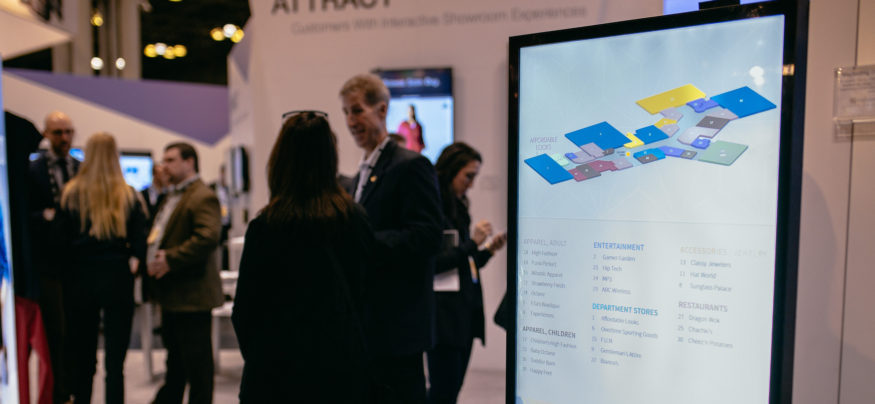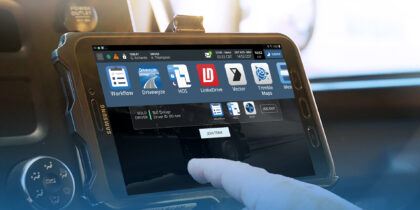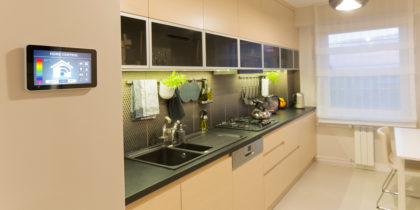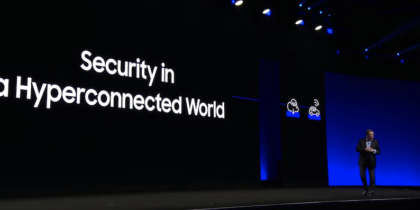Next week’s Digital Signage Expo (DSE) in Las Vegas provides an opportunity for end-users and service providers to see the latest digital displays in this rapidly growing and evolving industry. The annual trade show should attract more than 4,000 attendees to the exhibit hall and many education sessions.
Here’s a rundown on digital displays and related technology advances that will be touted on the Digital Signage Expo show floor:
Video Walls
The big luxury retail brands, corporations, airports and media companies that now invest in video walls have two very distinct options to create big digital canvases: indoor LED or narrow bezel LCD displays. DSE attendees will see a wide variety of companies, from major global display manufacturers that offer both options, to specialists that only manufacture LED displays.
As an exhibitor, Samsung is launching the IF series of fine-pitch LED displays at DSE, with 1.5mm, 2mm and 2.5mm pitches. The new products use High Dynamic Range (HDR) technology, the same enhanced picture quality technology built into premium televisions.
The main attraction of fine pitch LED over LCD is the absence of seams on video walls, but ultra-narrow bezel LCD video walls now have barely noticeable seams between each display. Samsung will be showing its latest video wall displays, which leave a seam only 1.7mm wide between the LCD panels.
Any large-scale shift from LCDs to LEDs for video walls will be gradual, as LCD technology remains significantly more affordable than LED. The finer the pixel pitch, the more expensive LED walls get.
Additionally, a handful of these new video wall panels with ultra-slim profiles are American Disabilities Act (ADA)-compliant, meaning that with slim mounting hardware, the walls stay within the U.S. government’s 4-inch clearance requirements for objects protruding from walls.
The Ultimate Videowall Guide
Get an overview of how this technology can benefit the enterprise at every level. Download Now
Smart Signage
Smart Signage system on chip displays debuted at DSE four years ago, and since then, most major LCD manufacturers have developed competing products that also ship with the media player smarts embedded inside the display. The main proposition then, and now, is smart displays negate the need and extra cost of a separate media player.
Some smart signs run on Tizen, a multiplatform, Internet of Things-ready operating system. Already used by scores of signage software companies, the Tizen version of smart signage opens the potential developer community to thousands of web and app developers working on other Tizen devices.
The latest displays — across all sizes — also ship with much more powerful ARM-based processors inside, meaning they can handle most or all of the “heavy lifting” content demands, like high-resolution video and dynamic graphics.
Specialty Displays
Different vertical markets are requiring very different types of displays for varied use cases, and the DSE show floor will show many of them. There has been a spike in demand for small, network-managed smart displays used as meeting and banquet room signs, while mirror display offer exciting potential in retail.
The classic flat panel TV shape — with a 16 wide by 9 high aspect ratio — is being supplemented by interesting new LCD display shapes that serve different purposes. Think about a standard 16:9 panel, except sliced in half horizontally to produce a stretched 16:4.5 widescreen.
This new stretched shape raises possibilities like directional signs, station notification screens on trains and other mass transport services, and screens in retail that have more visual presence than tablets, but don’t take up precious merchandising space as full displays would.
Outdoor-facing displays — bright enough to cut through direct sunlight — are in demand for shop windows, replacing posters. And in both the education and corporate market, interactive “e-board” displays with touch overlays are taking over from white boards and felt markers.
Analytics And Data
DSE attendees will hear a lot this year about software and hardware tools that anonymously track and measure audiences, developing behavior patterns and triggering content that’s better tuned to the audiences, places and moments. There will also be more demos showing how Internet of Things data and sensors can dynamically trigger and shape content.
There are gimmick applications, but most of this technology is squarely focused on driving business goals by giving users more information about the audience and venue dynamics, allowing them to optimize content accordingly.
DSE is a relatively small, but information-rich and busy, event. There’s a lot to see and understand, and unlike some mammoth shows like CES or ISE in Europe, there’s enough time to see everything, talk to vendors and learn.
Oh, and be sure to wear good shoes.
Digital signage can help increase customer interaction and engagement with your business.











